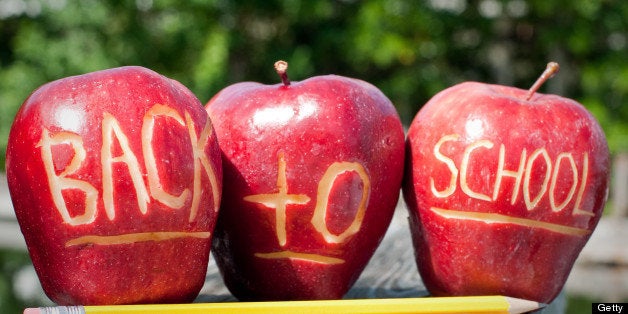
The back-to-school season isn't exactly a holiday -- for many students, the end of summer feels like quite the opposite -- but in terms of commercial activity, the back-to-school shopping season is second only to the winter holidays in total spending. In 2012, U.S. families spent $83.8 billion dollars on back-to-school shopping, and while the 2013 figures are projected to be slightly less, there's no doubt that July and August are major shopping months.
As CEO of a green business, I'm constantly thinking about how consumption is affecting our environment. There's no doubt that a lot of new items are purchased as a part of back-to-school shopping, and unfortunately, I have little doubt that much goes to waste in making room for new items. When it comes to shopping of any kind, the general rule is to reuse as much as possible and buy green when it's an option.
Check out our infographic for a closer look at back-to-school spending habits.
As the infographic illustrates, the majority of what is spent will go toward clothing and shoes. Reducing back-to-school clothing consumption makes environmental and fiscal sense, but even the most eco-conscious family will find that there are a few things that need to be purchased new.
When looking for new items while back-to-school shopping, go the eco-friendly route whenever possible. Amazon has compiled a list of green back-to-school items, from lunch bags made from recycled materials to pencils made from recycled newspapers. Backpacks made from recycled materials are readily available, too.
This year, the average family will spend $634.78 on school supplies, which sounds like a lot, but it's actually down 8 percent from last year, when an average of $688.62 was spent. Counting the National Retail Federation's projection for this year, 2012 is something of an outlier, as families splurged to spend significantly more money than in 2010 and 2011.
Given 2012 was a year of overbuying for many families, the easiest solution for reducing back-to-school spending and reducing the need for unnecessary new good to be produced is to reuse what you've already got. That means sorting through old school supplies, which children don't outgrow, and reusing old clothing and shoes that might not fit anymore. Just because a notebook or t-shirt isn't new doesn't mean it can't feel new the second time around.
For the leftover items you can't reuse within your own circle of family or friends, turn to Earth911's recycling guides for tips on responsible disposal. For clothing and shoes, look for a USAgain recycling bin in your area or consider hosting an end-of-summer garage sale to bring in a little money and make room in your closet. Also, look into swap-and-reuse programs that enable the swapping of reusable items, like the Twin Cities Free Market in Minnesota. Such programs that allow reusable goods to be passed on and money to be saved are true win-wins.
As families flock to stores and online retailers to restock on clothing, shoes and school supplies, the less-is-more approach is the one that'll benefit wallets -- and the Earth -- in the end.
Check out the EPA's back-to-school consumer guide for reducing waste, and as you place items into your cart, be selective -- you'll be saving not just dollars but the environment, too.